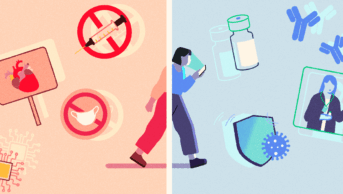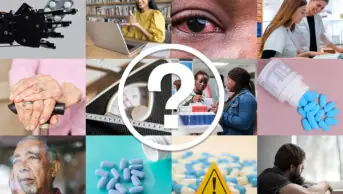It has been interesting discussing treatment options for complex patients with the GPs. You have to look at the bigger picture and, by discussing with others, you may come up with a different care plan completely. For example, we discussed how to deal with mood and behaviour changes for a patient withdrawing from high dose steroids. The prescriber initially considered prescribing zopiclone to help with sleep. However, the notes showed the patient was already on a number of medicines including a sleeping tablet and he had reduced the steroid dose really quickly. We decided it would be more suitable to refer back to the specialist and, in the meantime, increase the dose of steroid and then reduce it slowly, instead of adding a sleeping tablet.
We also discussed treatment options for a patient with uncontrolled hypertension who suffered from oedema while taking a calcium channel blocker. In this case, I followed guidelines from the National Institute of Health and Care Excellence (NICE), the local formulary and literature discussing which calcium channel blocker causes the least fluid retention. I am always being asked to look into prescribing queries such as “what is the rational for prescribing azathioprine for meibomian gland dysfunction?” and “is a higher dose of varenicline required for a patient with a very high BMI (body mass index)?” I think my previous roles have helped me look for reliable evidence-based information to deal with these types of queries.
Diabetes
I recently attended the Centre for Pharmacy Postgraduate Education type 2 diabetes medicines optimisation and patient-centred consultations day. I have been out of practice for a while so I found the day a useful refresher on the new guidelines regarding new drug treatments, sick day rules, rules from the Driver and Vehicle Licensing Agency and treating hypoglycaemic episodes. By the end of the day I was more confident in completing medication reviews for patients with diabetes and feeding information back to the diabetes nurse.
Medicines management
The medicines management meeting was a chance for me to meet the team and meet other pharmacists in the area who worked in community. The evening was helpful and covered NICE guidelines on diabetes, antibiotic stewardship and end-of-life planning.
Clinics, medicines optimisation and reviews
My day-to-day tasks vary and include reviewing ScriptSwitch, a prescribing decision tool which recommends any clinically and cost-effective alternatives available at the point of prescribing. I make sure appropriate switches are being made by the clinicians. This also ensures patient safety because products recommended are evidence based, follow national guidelines and formulary choices, as well as being cost-effective. I also review performance data and feed back to the clinicians. This includes re-authorising expired repeat prescriptions, updating medicines from discharge and clinic letters and improving safety and effectiveness of prescribing using the Eclipse tool, for example, by running searches to make sure patients are monitored and relevant tests are carried out and documented at correct intervals.
I conduct medication reviews for new patients at the surgery. The clinicians also refer patients for a 20-minute appointment with me after their review. I invite them to come along with their medicines or repeat slips and go through each of their medicines adding to repeat or repeat dispensing as appropriate. The Medication Related Consultation Framework (MRCF) has been useful in my consultations to gather information. I highlight any issues, stop medicines and make changes to doses after liaising with the prescriber. It is also a chance for me to get to know the patient and refer them to any other community-based services they may need.
Respiratory clinics
For my log of evidence for my non-medical prescribing course, I have shadowed and led a few asthma and chronic obstructive pulmonary disease (COPD) clinics under supervision and with patient consent. These consultations are my favourite part of the job because it allows me to develop my consultation skills on a prescriber level and practice using my diagnostic and assessment skills. I even treated myself to a fancy new pair of stethoscopes!
I do the usual blood pressure checks, pulse oximetry, temperature, height, weight, inspection, auscultation and palpation of heart, lungs, urine dipstick analysis, peak flow, spirometry and checking inhaler technique using the In-check dial. The reviews also involve questionnaires such as the COPD Assessment Test (CAT) score, Medical Research Council (MRC) breathlessness scale and Royal College of Physicians (RCP) ‘3 Questions’. I use the Calgary Cambridge model in my consultations to gather the information I need. After the clinics I spend time with the clinician or my designated medical practitioner discussing certain patients, interpreting diagnostics or identifying learning needs. I am finding time management for appointments and documentation with coding challenging but I hope I will get there with time and practice. I don’t know how clinicians manage with 10-minute appointments!


